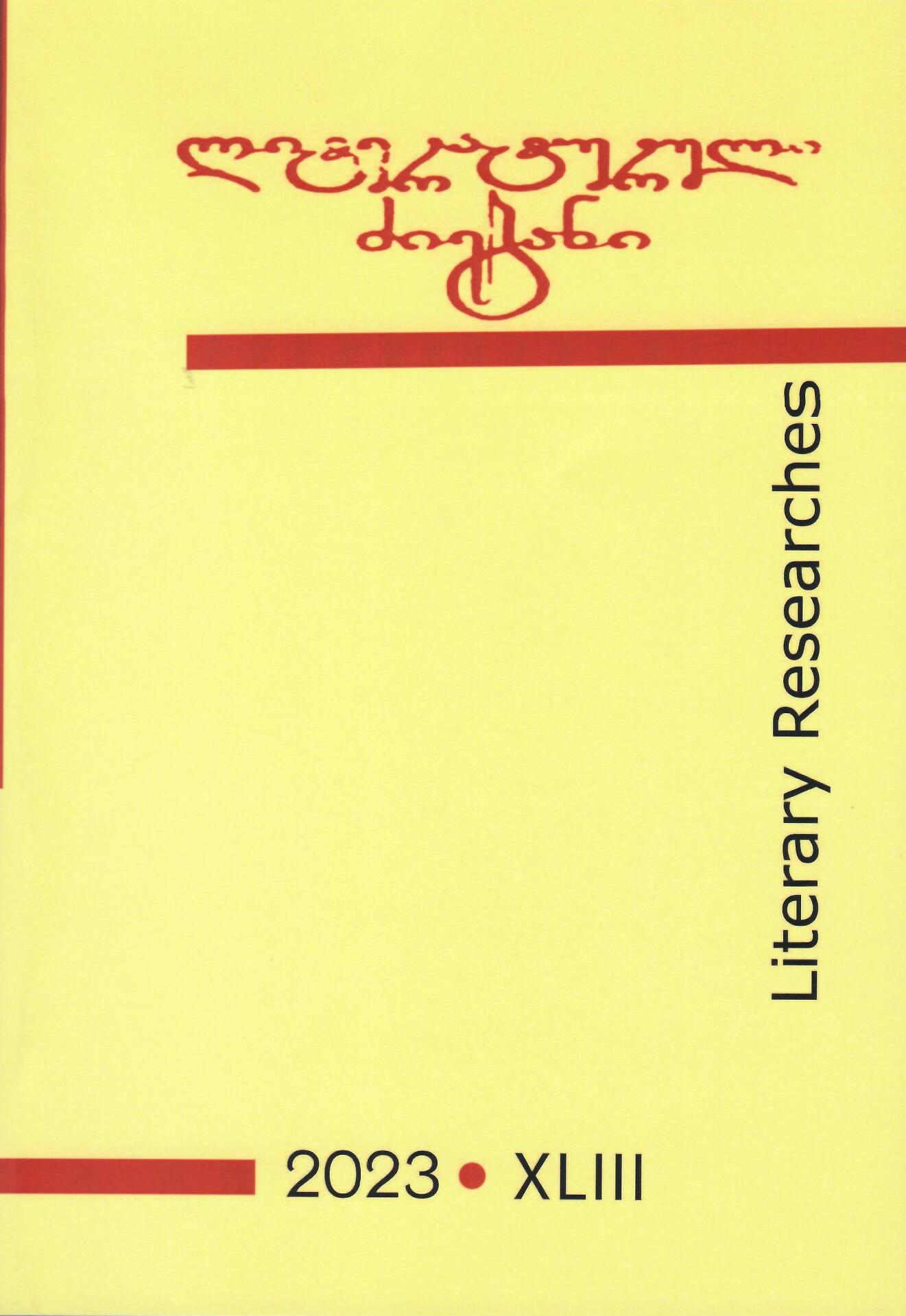Published 2023-12-14
Keywords
- “Under a Radio Spell”,
- epigraphs,
- „The Knight in the Panther’s Skin“,
- Gospel
How to Cite
Abstract
The epigraph performs an important function in Niko Lortkipanidze’s writings. In the novel “Under a Radio Spell”, the writer uses excerpts from „the Knight in the Panther’s Skin“ and the Gospel as epigraphs. The first one almost exactly repeats the original and that is why the source is preserved (“Rustveli”), in the second case the relation with the Gospel is so formal that the writer does not refer to the Gospel as a source. Eli is the subject of both epigraphs; in the first, she addresses other characters, and in the second, the reader. Each of the two epigraphs is based on the same idea: phrases wellknown to the reader are deprived of their original meaning, so to speak, they are decoded and replaced with the motives and ideas of the story, i.e., the writer uses the verbal forms of well-known phrases to convey his own message. Both epigraphs encode the main message and idea of the story. They capture the mood and attitude of the writer himself towards his character and the main idea of the story.
The strophes from „the Knight in the Panther’s Skin“ (slightly modified) in the first epigraph demonstrate that the existence and state of mind of Eli and secondary characters – Heksley and Bromley – had nothing in common with each other, they lived in two distinct realities: on the one hand, there was a time for joy and feasting and on the other hand – a time for crying and mourning. Niko Lortkipanidze needs this contrast, so he calls forth Rustaveli’s strophes, but this time the substitution of the characters occurs. This text conveys Eli’s message. Obviously, the political subtext of the characters and their relationships are maintained.
If in the first epigraph, the trio’s diverse relationship is shown through the plot, which includes Eli’s meetings with Huxley and Bromley as well as their lives in various European cities, until the final episode, the second epigraph goes to Eli’s final. The only text to which the second epigraph refers is the Gospel. But this connection is so formal and associative that the writer did not point to the Gospel as a source. In the text of this epigraph, Eli speaks, not the Savior.
“For this is my blood...” – this is Eli’s blood (“the woman lying on her side was turned on her back, removed her hand from her cheek and then saw the only drop of blood dried at the base of her ear”). The Savior’s blood, a part of the Holy Communion, cannot be meant here, because it is inseparable from his own flesh (“Jesus took bread and having said the blessing he broke it and gave it to the disciples with the words: “Take this and eat: this is my body” (Matthew, 26, 26). Niko Lortkipanidze “needs” only blood, he refers only to blood (obviously, it has lost its sacred content, that’s why the words of the New Testament are removed from the epigraph). As we mentioned, this is Eli’s blood, the counterweight of his sins and errors, the redeemer (“to forgive sins”). The syntagma “torturing life” is associated with this blood. What does “torture” mean here? Of course, the torture that Eli experienced before death, bitten by a snake. (“Tormented” should be understood as torture, suffering, and not in the meaning it has in „the Knight in the Panther’s Skin“ strophe: “You tortured me with life” (138). We believe that “gamitsame” (tortured) in this particular strophe is derived from the word “tsami”, which combines real and symbolic meanings of time in the poem and refers to the prolongation of
life. There is a different context is in the epigraph of the novel.
Eli’s behavior in the climactic episode – dancing with snakes in exchange for returning to homeland – is regarded by Niko Lortkipanidze as a sacrifice, imprinted with the character’s sinful blood (“This is my blood”), a life ended in torture (“for a torturing life”) that is of social and national significance (“For you and for many”). To express this idea and mood in the epigraph, the writer uses a specific verse of the Gospel and puts his message in its verbal formula in such a skillful manner that it exactly preserves the divine color, depth and mystery of the original text.

